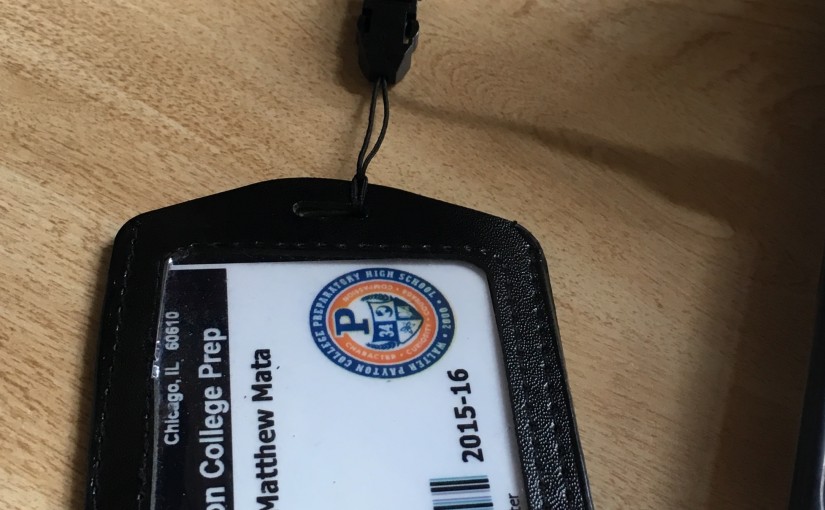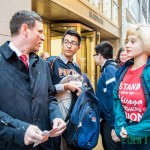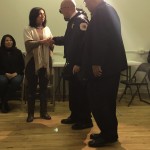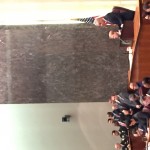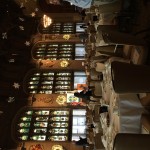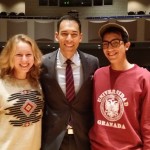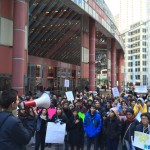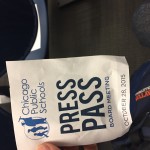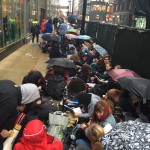This was practiced after attending the speaking center. So i was adjusting to the new format learned. Overall I did use a lot of ‘um’ but eye contact was good. I stumbled when I veered of course.
S2: Speaking Center
I for one am not someone who enjoys asking for help, but after meeting with Claudia Sanchez may have, kinda, changed my mind about that. I pleasantly enjoyed my experience at the Speaking center. Being her last appointment there was to feeling of having to her up and rush and it was very conversational. We talked about my topic and her experiences listening my classmate’s speeches. This of course was after we discussed and practiced my speech. We focused on avoiding stumbles while giving the speech. She did so because my argument was reliant on clearly articulating my evidence. I would recommend the speaking center to others and go again myself. I also found out my RA is a speaking coach.
S2 Video Practice #1
This practice video was taken prior to attending the Speaking Center. You can clearly see I depended heavily on the paper and took frequent pauses. Having my window open and having the baseball team blast music and there being a delivery trucking too made it hard for me to focus – semi-excuse. I also was not certain in which direction to look at.
S2 Write-Out
Hello everyone for those who don’t remember, my name is Matthew Mata, I grew up in Chicago – the greatest Urban city in the country. There are three main components that make a city strive – all of which Chicago has – culture, connectedness, and an extraordinary populus. Chicago is ranked second of metropolitan cities in relative size for their transportation system. Besides it’s vast array of destinations – at any given time of day you can see ‘Chicago’ on any train car. Going to school in the city it was common to take public transportation due to its ease both financially and overall convenience.
Currently, Chicago bike ridership is at its highest level – approximately 1.7% of Chicago’s going to work age 16 and up ride their bike to work. With Chicago’s population of 2.7 million and 400,000 commuting to work within city limits, that is only 6,800 bikers community to work daily. The Chicago Department of Transportation admits these statistics have their own limitations, for staffers and volunteers count bicyclists manually at 20 downtown locations on one day each quarter, during the morning and evening rush hours. According to the CDOT counts, the total number of cyclists at these 20 locations increased in the morning rush hour on average 16.9 % from 2012-14 while afternoon bicycle counts increased 20.7% from the same years. Despite these increases, I still do not see bicycling being an ideal mode of transportation in the city of Chicago. Like any bicycle city, bike theft is very common. According to the Chicago Police Department, there were 4,919 bikes reported stolen in Chicago in 2012 and 4,608 in 2013. Each year approximately 94% of bike theft investigations get suspended – meaning the CPD has exhausted their resources and will terminate the investigation unless new evidence is brought forth. Let me reiterate that these statistics only highlight the number of reported stolen bikes.
The most logical mode of transportation in Chicago is taking the ‘L’ or train system. While yes the cost associated with taking the ‘L’ is significantly more, as a biker you risk being one in three people who get their bike stolen – then shelling out $400 yearly on a new bike. Despite the decrease of fatal bicyclist crashes in Chicago of 28% between 2005-2010, there were still 32 cyclist death in Chicago. The injury crash however increased 27% between the same years – 1,236 to 1,566 crashes. On average there are 1,500 bike related incidents reported. This compared to the mere 5,800 crimes reported on the CTA – an average of 16 crimes per day but are insignificant due to there being over 767,730 rail riders daily and 241 million annually
You rarely hear the possible health dangers associated with biking, and are often showed the health benefits – which in Chicago has their limitations. One of Chicago’s most prominent seasons is winter where temperatures so often fall below 0 degrees fahrenheit. With the Average Winter temperature being 21 degrees, based on this graph you can see where the wind chill values fall. *Graphs* This drawback even highlights the inconvenience Divvy – Chicago’s bike sharing program poses. Despite being a more affordable alternative to taking mass transit, Divvy only offers one-speed bikes and 30 minute time limits in between station. And one can only imagine trying to pedal through slush and blistering winds. So the question then becomes what about Divvy is convenient. While yes Divvy’s latest data visualization compared the speed of Divvy with the speed of the CTA. Divvy only wins by insignificant margins. From two areas of study, Divvy bicyclist beat CTA riders anywhere from 2-5 minutes. But you can easily be lucy and get an express train. In closing, the CTA is proven to not only be more convenient, but also the more safe mode of work transportation in Chicago. So now it’s up to you in which L you want to take. Thank you.
Gleeson Library
This was my first time using the Gleeson Library for research – in person and online. I searched “public education space bicycle.” While this is a very acute keyword search – there were an array of search results that were relatable to my search topic as well that were;t (only picked up on the keyword). I also appreciated the tool ‘ask a librarian’ on the sidebar, for it could be very helpful.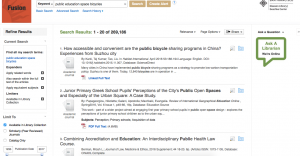
TED: the up down of hills
Computer Science Profesor Schimon Schocken took a break from numerical analysis and decided to transform the lives of young men in an Israeli corrections facility. Seeing the value of education, Schocken convinced the Warden of the facility to allow ten young “troubled” men to join him on his weekly mountain biking adventures. This was to establish a club for them to have a sense of empowerment. He hoped the feelings he experiences while on bakeries would be that of these young men – thus transforming their lives. He claims there to be a “connection with energy that is greater than [himself] yourself.” These weekly adventures were to “magnificent vistas” in Israeli, meant to captivate and transform the mentality and perspectives of these young men. He highlights the varies encounters – whether it’s with creatures, weather elements, or terrain – how each impacted these kids in a varied way. Schocken describes how the challenges of the up and down hill rides each developed a new principal or value within these kids and how it transformed them over these rides. They developed respect for other members of the group, love and appreciation, and most importantly love for themselves. The most interesting part of this TEDx was that Schocker himself realized and gained the same experiences he sought out to teach. For being a computer science engineer he never needed certain skills to deal with varies situations. It was as as if “frustration (of the kids) met frustration (his own frustration)” and found ways to work around them
Principals -teamwork, endurance, perspective, resource allocation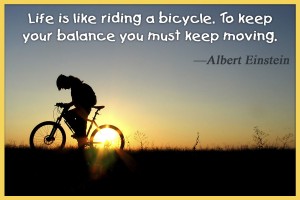
S2: What is next?…Wait I know!
Read a selection on “Using Field Research” from Envision: Writing and Researching Arguments (Alfano and O’Brien, 2014).
Use 1 or 2 slides, as appropriate.
The aura around public schooling especially Chicago Public Schools – or Chicago in general – is not necessarily always a positive one. Therefore, my topic proposal for S2 will somehow be centered around [Chicago] public education. While yes, this course is titled, “Speaking of Bicycles,” we spend a lot of time speaking, analyzing, and drawing connections between everyday life either to bicycles literally, but mostly ( in my opinion figuratively). Thus, I shall do the same. The concepts of space, the complexities of simple mechanics, and overall perception are all concepts that can easily be explored through the public education crisis in Chicago. In terms of gathering information, yes I will obviously use numerical evidence to support my claim – because for Chicago the numbers are just outrageous – but primarily the pathetical and logistical aspects of my speech will be what I intend to focus on. Just like situations/concepts surrounding bicycles, a lot of it has to do with personal experience, benefit, loss, and logical/reasonable use.
What Is In My Space & How Do We Share It
Like every person in SF, my friends and I wanted to escape Sunday’s heat. We decided to go to the beach, but not the typical beaches SF people go to, because we knew that there would not be any space. As we made our way over the Golden Gate bridge you’re categorized as a: vehicle, bicyclist, or pedestrian. Obviously we were pedestrian, therefore we were confined to the right side (outbound side) of the bridge. In the middle were 6 lanes going North and South filled with vehicles – easily speeding 70 mph – on the far left side were bicyclist going from 5 (the tourist) to 25 mph. But the question then became was that enough.
Bridge rules separated the three modes of transportation, but it did not solve the problem of congestion. As Zimmer stated, “cars aren’t the problem, but the way we use them,” thus, how can we find a solution to 21st century congestion. Is there a way to be speedy, but yet enjoy life’s offerings like Carlsson describes with his bike? Zimmer quote, “Transportation doesn’t just impact how we get from place to place. It shapes what those places look like, and the lives of the people who live there,” partially highlights the difficulties around our ability to coexist. Because there are so many variances across urban cities and preferred/realistic transportation methods, our ability to coexist imparts social barriers that continues the need for a new “transportation revolution.”
Passing the Press
It was only last October, I remember getting off the phone with the Communications Department at Chicago Public Schools and running to my Journalism teacher to tell her the good news. The news of granting a student journalist access to school board meeting as a member of the press; as long as I had a press pass. Minutes after relaying the news, there I was, with it in my hand – my school ID card with a few added graphics with the added line “PNN Reporter.”
I brought my press pass with me to USF, because there are memories and experiences that are attached to it. Whenever I was going through a rough patch in my few weeks here, I would just look at it and remind myself of those times. That piece of plastic truly transformed my life. My whole senior year, that press pass not only granted me access to some of Chicago’s most elite events, but interviews with prominent politicos/influencers. Top reporters from various news outlets and print publications treated me as if I were on of them – someone who’s been in the game – and even offered me shadowing opportunities and personal contact information. The ability to learn from them and their communication methods continues to inspire my decision to become a communication studies major.
The longing to be the voice of reason for Chicago Public School only solidifies inside of me…
How I Organize
How do you organize/structure/arrange ect your writing?
Whenever given a prompt, I open up a new word document and just write anything that is associated with the topic down. In a middle of a paragraph if I experience writer’s blog or lose my train of thought, I tab and start a new paragraph. After about thirty minutes, I go back and check the formality of each paragraph and see if the style works well for the prompt. If there are clear paragraphs that go off on tangents, before deleting them i look for good ideas or diction I can use later on in the prompt. By hour’s end I usually have a formulated introduction and two to three body paragraphs.

